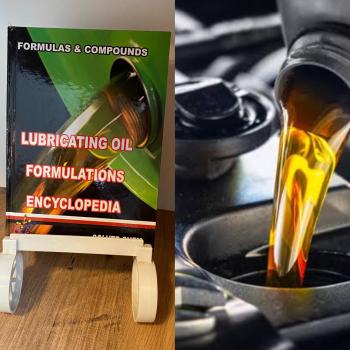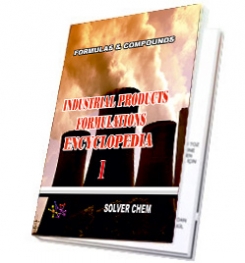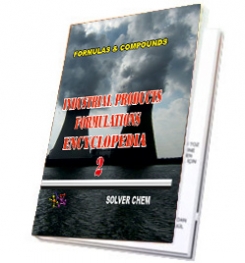
Synthetic lubricants continue to gain market share, thanks to higher performance properties that, for many uses, trump higher per-drum costs. Demand in the United States has grown to $2.2 billion per year, and is a resulting benefit of stricter environmental and worker safety requirements.
Virtually all customers revisit the debate of "mineral oil vs. synthetic lubricants" on a regular basis. In certain situations, it is part of an overall demand planning exercise; other times, it's simply to assure the facility is receiving the best life cycle value. Acculube encourages this process, and assists customers in completing the math based on their specific situation, therefore finding the best program to fit their needs. Processes and products change, and the price volatility of crude at the producer level substantially impacts the equation; therefore a fresh look, at least annually, is worth the effort.
Mineral OilsMany factors differentiate mineral oils from synthetic lubricants including what they can accomplish, their requirements for efficient functionality, and composition.
Naturally occurring crude is a cocktail of hydrocarbons. Even after aggressive solvent-based refining, thousands of hydrocarbon compounds - as well as organic compounds of oxygen, sulfur and nitrogen - remain. These three compounds in particular are problematic because they enable oxidation and acid development, as well as facilitate the formation of sludge, particularly in high-temperature applications.
The varying molecules of refined lubricants also have differing shapes, resulting in irregular lubricant surfaces at the molecular level. These irregularities generate friction within the fluid itself which increases power requirements and reduces efficiency.
Synthetics
In contrast, synthetic lubricants are engineered products created by chemical reactions through the precise application of pressure and temperature to a specific recipe of components. All of the components are high in purity with strong molecular bonds. As a result, the end product is a pure compound, less vulnerable to oxidation, highly resistant to breakdown, and uniform in molecular size. This molecular size uniformity keeps synthetics from jellifying when it's cold (they do not contain waxes), and its specific molecular structure keeps it from thinning-out under heat; therefore, the lubricant's protective characteristics are more predictable. The saturated molecules created from the synthetic process are also nonhydrophilic and won't emulsify or produce undesirable by-products in high-humidity environments.
Traction Coefficient
Molecular size is also key to one of the synthetic lubricants' operational virtues - its traction coefficient or internal fluid friction (resistance). Traction coefficient is the shearing or tangential force required to move a load, divided by the load. The coefficient number expresses the ease with which the lubricant film is sheared.
Compared to mineral oil molecules, synthetic lubricants, for example, have up to a 30 percent advantage over mineral oils for traction coefficient. This means the force needed to move a load is less, which means less horsepower to do the work.
In a gear reducer, the lubricant in the tooth mesh is sheared, and the lower the traction coefficient, the lower the energy dissipated due to lubricant shearing. The difference is realized by low amperage draw on the motor and reduced lubricant /gear temperature.
Changing to a low-traction synthetic will reduce power consumption in a spur/helical gear by 0.5 percent for each reduction, and up to 8 percent for high-reduction worm gears.
Gear Wear
The issue of gear wear is also a consideration. A study cited in Machinery Lubricationmagazine1 implied synthetic lubricants make gears more efficient than mineral oils. A polyglycol showed the highest efficiency (18 percent more than the high-performing mineral oil). Synthetic hydrocarbon (SHC) gear oil also increased the efficiency of the best gears by eight to nine percent. The performance of synthetic lubricants in food-grade applications in accordance with USDA-H1 food contact is also a benefit. Food-grade synthetics are sometimes believed to be inferior in performance to mineral oil lubes, a belief the study dispels.
Service Life
A popular topic concerning the difference between mineral oils and synthetic lubricants is service life. Synthetic lubricants as a class don't show their age, particularly at high temperatures, and have a longer service life. Often, the change interval is several times longer for synthetics at identical operating temperatures; however, the exact number depends on operating conditions, the additives and the specific synthetic used.
Synthetic lubricants have a lower friction coefficient in a gearbox, better film strength and a better relationship between viscosity and temperature (viscosity index, VI). This indicates synthetic lubricants can be used at lower viscosity grades and lower temperatures. When this is the case, the gap between the service lives of minerals and synthetics significantly increases.
Related to the oil change interval is the issue of product loss through evaporation and disposal. Both sludge and residue form more readily with mineral oil products. Evaporative losses are lower for synthetics due to the lack of lighter hydrocarbon structures. Disposal is more costly with some synthetics, but it is nowhere near enough to compensate for change-out intervals that are three to five times more frequent.
Safety
In regard to safety and insurance risks, the flash point for synthetics as a class is always higher, and reduced flammability is a key driver for synthetics' growing popularity in high-temperature applications.
Disadvantages
Synthetics, like most other lubricants, can have disadvantages. Material compatibility issues can occur with certain seals, metals, paints, coatings and plastics. Many ester-type synthetics do not perform well in the presence of water and can decompose or break down (hydrolysis). They also can cost more on a per-drum basis, though not necessarily on a life-cycle basis.

any engine oil
LUBRICATING OIL
FORMULATIONS
ENCYCLOPEDİA
is enough.
LUBRICATING OIL FORMULATION ENCYCLOPEDIA has many formulations of greases, complex grease, lithium grease production,sodium greases formula, formulation,multigrade engine oils manufacturing process,motor oils making, gear oil production, synthetic engine oils,semi synthetic motor oils,gasoline oils,diesel oils production process,composition of turbine oils,transmission oil manufacturing, production of cycle motor engine, tractor oils,mineral based motor engine production,heat transfer oils, slideway oils formulation, formulations, cutting oils formula,formulas grinding oils,mould oils manufacturing process and etc.
All lubricating oils in the encyclopedia are producible easily.You need no help and no technıcal support. The encyclopedia is enough to produce lubricating oils and engine oils itself.
LUBRICATING OIL
FORMULATIONS
ENCYCLOPEDIA
is written clear and understandable.


HARD BOOK E BOOK
RELATED TAGS: What is engine oils,making synthetic diesel engine oil,semi synthetic engine oil manufacturing process,mineral based engine oil production, heavy duty engine oil formulation,high performance engine oil formula,formulas,properties of motor oils,synthetic motor oil msds, analysis,composition of engine oils,additives of motor oils, mineral engine oil formulation,make semi synthetic diesel engine oil, base oils,synthetic base oils,light neutral oil,heavy neutral oil,performance additives package, properties of diesel engine oil, how to formulate engine oils, types of engine oils, synthetic motor oils,ingredients of engine oils,compounds of engine oils, index of motor oil,characteristic of motor oils,application of motor oils,combination of synthetic engine oils.
SOLVERCHEM PUBLICATIONS

|
|

|
|

|
|
